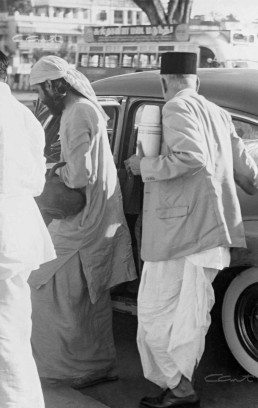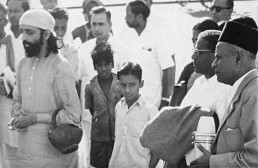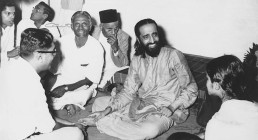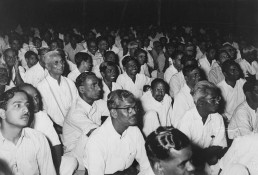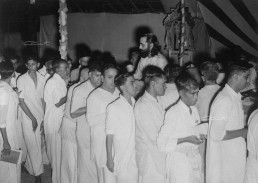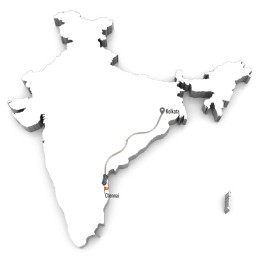
Jnana Yajna 16

Year & Dates:
December 25, 1955 to January 29, 1956

Yajna Topic:
Bhagavad Gita- Chapters 5 & 6

Place:
Mylapore, Chennai, India
The cozy square before the Venkatesa Perumal Temple, Mylapore had a spacious Pandal on the 24th December of 1955. For the next 35 days, that square overflowed with more than 3800 people of all ages. They sat or stood anywhere in rapt attention – even perched on walls and in cars, where they could catch the words from a loudspeaker. Every evening for two hours, from 6 pm, Pujya Gurudev Swami Chinmayananda carried them to a place of an immortal discussion, to the life-altering wisdom of Bhagavad Gita Chapters 5 & 6. Starting with the opening question of Arjuna in chapter 5, “Renunciation of action or participation in action – Which is nobler and greater?” Pujya Gurudev traced the path of elevating action from the desired to the desireless. The culmination of this serial process of evolution would then be perfect, meditative silence elaborated in chapter 6.
Metaphors to Meditate On
To explain this subtle thought progression of the Gita and hold the attention of about 4000 listeners all at once, Pujya Gurudev did what had become His hallmark as a Master Teacher. He picturized the message: the reed tossed by the waves, the lighthouse that stood strong, the sunlight scattered by a prism, the skilled rider who mounted a wild horse – such metaphors made a lasting imprint.
When Pujya Gurudev concluded His discourses and distributed the Vibhuti from the Gita Havan that had been performed in the last part of the yajna, over 5000 people chanted “Om Namo Narayanaya, Om Namah Shivaya, Om Namo Bhagavate Vasudevaya” surcharging the area with sheer divinity. Dedicating that resounding success at the Lotus Feet of His Param Pujya Guru, Swami Tapovanam, Pujya Gurudev moved to His next yajna, untouched by fame like the lotus leaf that He described in Gita, chapter 6.
In Admiration
Sulochana Menon while emphasizing the compassion exhibited by the Master, says “We had the unique fortune of having amidst us a teacher, one who looked over the wall and found it no less entrancing but one who, out of his compassion, returned to tell the story to those left behind and help them over the wall. Swamiji did not promise his audience change overnight, as if by the touch of a magic wand. He led the audience from truth to truth by his scientific approach to each question.”
Photo Gallery
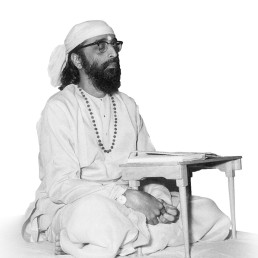
“Think,” Says Pujya Gurudev
An individual who has discovered for himself a sufficient amount of tranquility in which nothing can dare disturb him anymore, is certainly one who has plumbed the depths and touched the bottom. A reed on the waves will be tossed up and down by the waves, but a light-house built upon the firm rocks alone remains firmly upright and changeless, allowing even the stormy waves to exhaust their anger at its feet. Krishna’s argument is thus logically tight when he declares that a mortal among us who can maintain his equanimity under all conditions as explained in the foregoing stanzas is indeed one who has contacted the Divines and the Eternal in himself. ‘He indeed rests in Brahman.”
From Tyagi Magazine- June 1, 1956
In the Vedantic textbooks, Bhajan is the attempt of the Ego to pour out itself in an act of devoted dedication towards the Principle of Reality whereby it successfully invokes the experience that lies beyond the noisy shores of the mind-intellect. One who does this invocation (Bhajan) of the Self, and naturally, gets himself merged in that awakening, is declared here by the teacher in the Geeta as belonging to the highest type of meditation.
From Tyagi Magazine- Sep 1, 1956
Is the Key to True Peace Hidden in Detachment?
